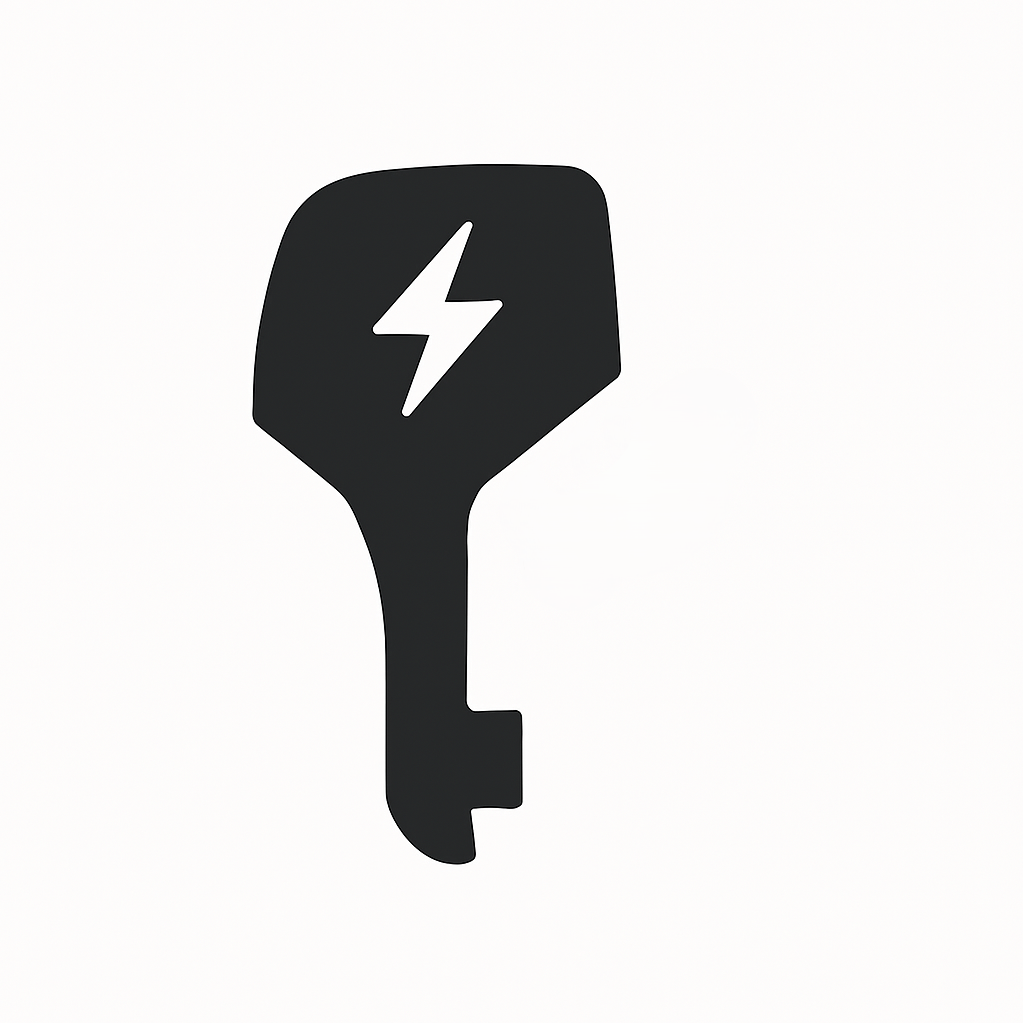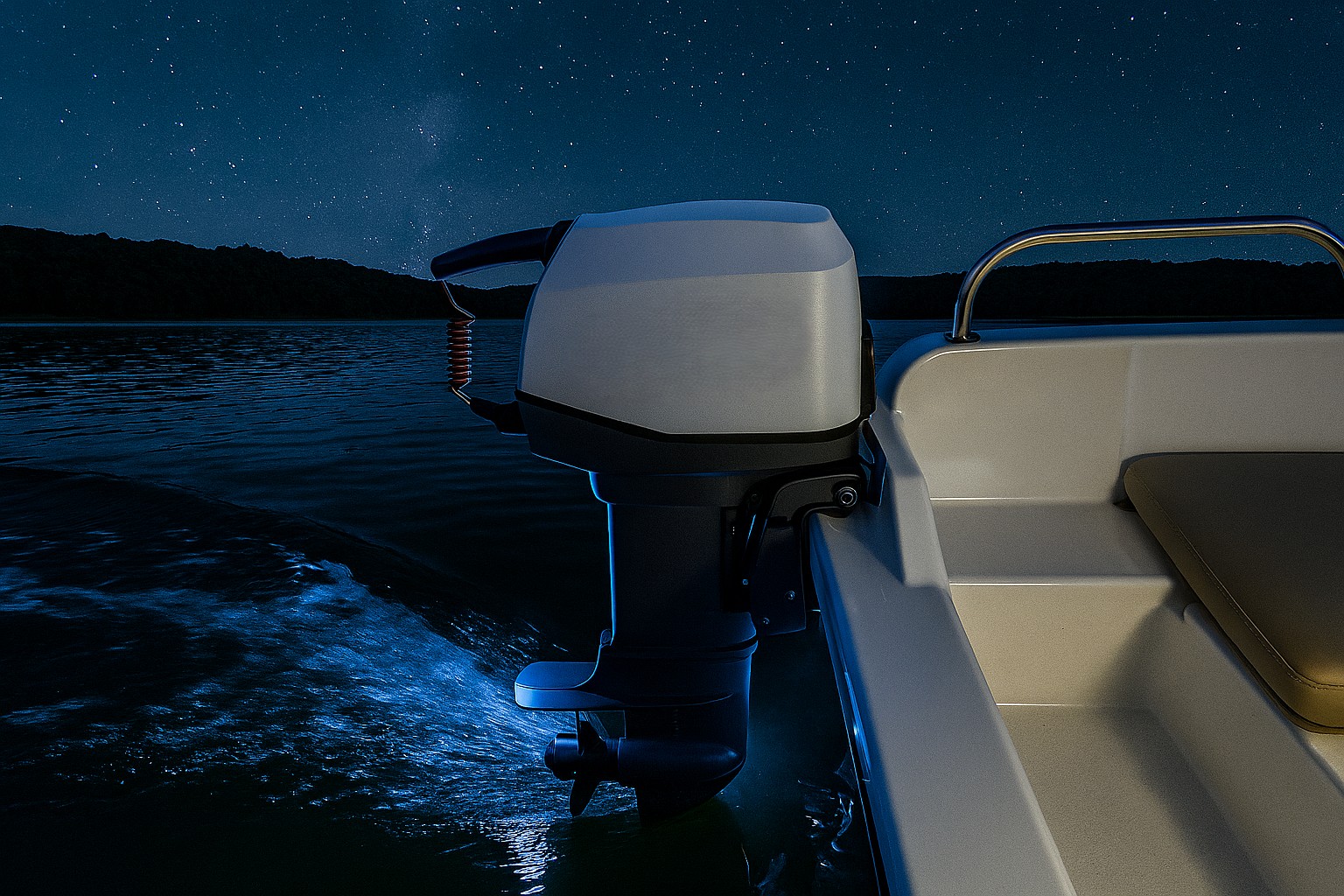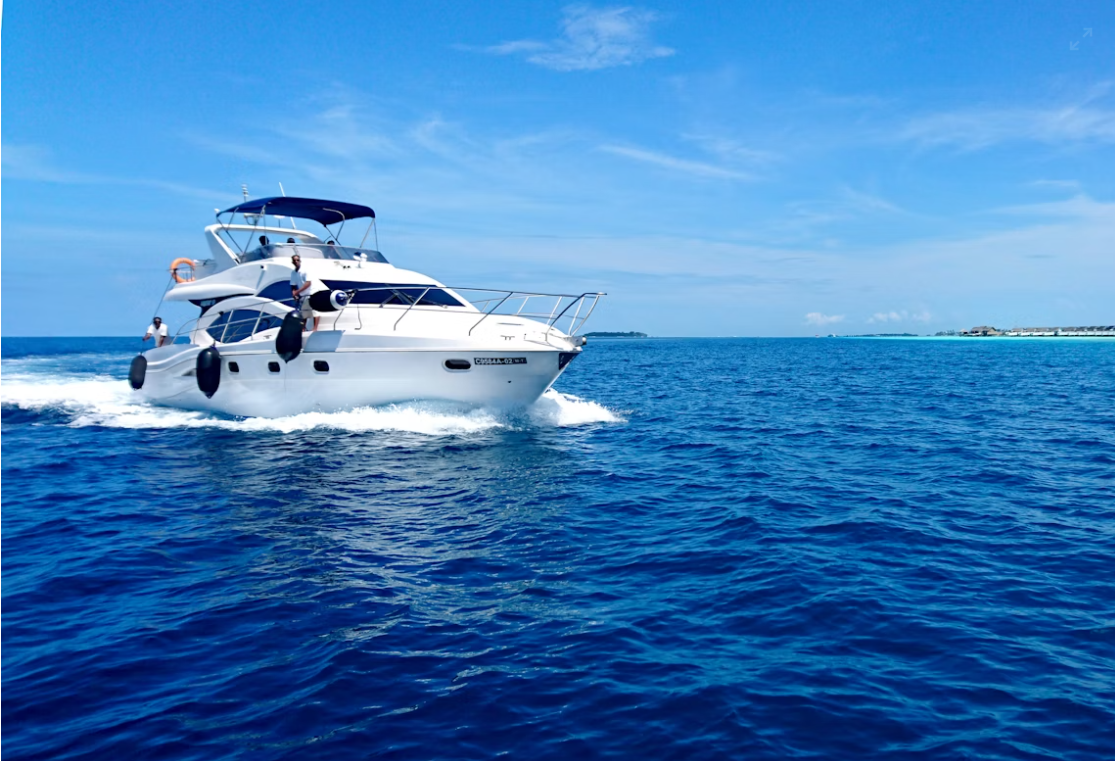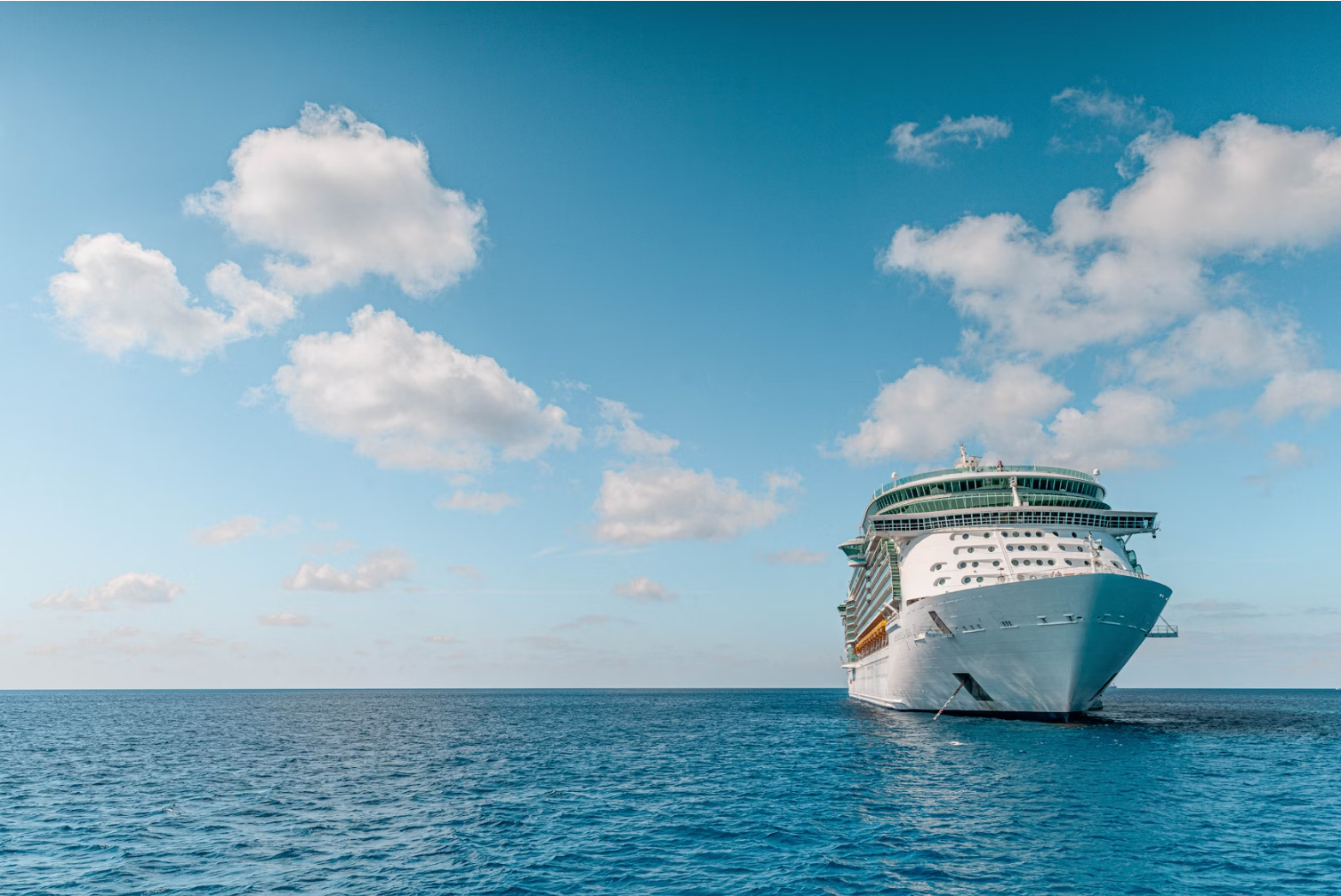Are you planning to cruise the stunning waters of the UK? Are you wondering which outboard will give you the best range for your adventures? No matter where you’re navigating, range is the key factor that will make or break your experience.
To help you choose a long-range electric outboard, this guide dives into a comparison of ExploMar and ACEL Power. We focus on electric outboards that offer impressive range options, robust battery architectures, and realistic charging solutions. With this information, you’ll be equipped to choose the system that promises to deliver the longest-range electric outboard performance for your boat.
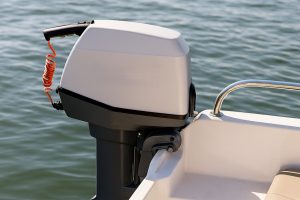
Why Long-Range Capability Defines the Next Wave of Electric Outboards
The era of silent, sustainable boating has arrived, and it’s being powered by the long-range electric outboard. For years, electric propulsion promised clean, quiet, and low-maintenance performance, yet one limitation held it back: range. Even with all their benefits, electric outboards couldn’t match the distance of petrol motors. That single gap kept many boaters anchored to tradition. But with today’s long-range electric outboards, that barrier is falling fast, and a new wave of innovation is redefining what’s possible on the water.
Freedom That Goes the Distance
Imagine cruising beyond the horizon without the hum of an engine or the smell of fuel. The long-range electric outboard gives boaters true freedom. As you’re fishing with the help of a long-range electric outboard, you will have the confidence to explore farther, fish longer, and enjoy nature uninterrupted. Range is no longer a constraint but an invitation to adventure.
Built for Every Journey
From quiet lakes at dawn to open-sea crossings at dusk, the new generation of long-range electric outboards expands what’s possible. They’re powering recreational cruisers, guiding eco-tour vessels, and even driving commercial fleets that once relied solely on combustion engines.
Technology That Redefines Range
Thanks to breakthroughs in high-density batteries, intelligent energy management, and regenerative propulsion, the long-range electric outboard is achieving what once seemed unreachable—longer rides, faster charging, and smarter efficiency.
Sustainable Power Without Limits
This isn’t just a new type of motor; it’s a new mindset. The long-range electric outboard lets boaters go green without giving up performance. It’s the perfect harmony of sustainability and adventure—proof that the future of boating is clean, quiet, and boundless.
ExploMar — Modular Power, Smart Efficiency

ExploMar’s products target medium-to-high power applications with a modular battery strategy and system-level controls (“SmartCaptain”). Dealer sheets for 2025 list SI-90 ~90 kWh packs (NMC chemistry) that can be paralleled (e.g., SI-90 × 2 ≈ 180 kWh) to scale electric boat range for 6–8 m RIBs and fast cuddy boats.
Battery Architecture and Energy Density
ExploMar’s appeal is quite simple and practical. Imagine you’re out on a boat, enjoying a sunny day on the water, and you want to ensure you have enough power to make it back without any issues. ExploMar offers energy packs that come in easy-to-understand sizes—about 90 kWh each. This means you can plan your energy needs in manageable chunks.
Although the SI-90 is the company’s standard module, ExploMar also provides the smaller SI-60 (60 kWh) option for lighter boats or shorter trips. For higher power or extended range applications, multiple 90 kWh modules can be connected in parallel or expanded in a system-level configuration. In fact, ExploMar’s Super/Island platform is designed for scalability—allowing a single propulsion system to reach up to 270 kWh (three SI-90 modules). Larger setups, such as the company’s 600 HP systems, may use four or even six SI-90 modules, delivering total capacities of 360 kWh or 540 kWh respectively. This modular strategy gives builders and operators tremendous flexibility to match energy capacity with mission profile, from leisure craft to high-performance commercial vessels.
Now, let’s say you have a smaller UK boat designed for high-speed cruising, also known as a planing hull. With ExploMar, you can take advantage of advanced NMC battery technology. This means your boat will be lighter and easier to handle, which helps improve stability and balance on the water. You won’t have to worry about running out of power or overheating your batteries, even when you’re zooming through rough waves or pushing against strong tides.
One of the great features of ExploMar is how it connects with your helm, the control center of your boat. It includes SmartCaptain readouts that inform you about your current speed, how much energy you’re using, and how much range you have left on your electric outboard motor. The display helps you keep track of your battery consumption. This way, you can avoid using too much power when it’s not needed, ensuring you have enough energy to return safely.
Long-Range Performance
Because real-world range depends on boat and sea state, here’s a scenario-based view commonly requested by UK skippers:
| Boat & Speed (kn) | Assumed Energy (kWh/nm) | Pack (usable kWh) | |
|---|---|---|---|
| 6.5 m RIB @ 18 kn (flat) | ~2.0 | ~76 (from SI-90 with 15% reserve) | |
| 7.5 m cuddy @ 20 kn (moderate chop) | ~2.6 | ~153 (from SI-90 × 2 with 15% reserve) | |
| 6.5 m RIB @ 25 kn (flat) | ~3.5 | ~76 (from SI-90 with 15% reserve) |
How to read it: Estimated range (nm) ≈ usable kWh ÷ (kWh/nm). With SI-90 (≈90 kWh gross), a 15% reserve leaves ~76 kWh usable for planning. For example, at ~2.0 kWh/nm you’re looking at ~38 nm; at ~3.5 kWh/nm ~21.7 nm. These ballparks align with publicly reported consumption at similar speeds and powers for other brands.
Charging & System Integration
For UK marinas, expect overnight AC top-ups on 16 A / 32 A IEC 60309 leads; that’s typically 3.5–7.4 kW at the pedestal depending on charger limits and shore fuses. ExploMar’s system design (per dealer sheets) supports modular pack charging and predictive routing, while remaining installable to BS EN ISO 13297 AC/DC wiring norms and RCR 2017 conformity when UKCA-marked by the importer.
Technology Platform: The Super Island (SI) Battery
Unveiled at the Venice Boat Show, the Super Island (SI) battery platform has been engineered by ExploMar specifically for their 70 kW to 229 kW electric outboards. Using advanced NMC chemistry with a cell-level density of 250 Wh/kg and pack-level density of 165 Wh/kg, it delivers high energy storage with minimal weight. The SI60 (60 kWh, 360 kg) and SI90 (90 kWh, 540 kg) packs can be configured up to 270 kWh per motor, or even scaled to 1,080 kWh in four-motor systems—making true long-range electric boating practical.
Real-World Validation
ExploMar’s technology is not just theoretical—it’s proven on the water. The company recently won the 16 Nautical Mile Race at the Monaco Energy Boat Challenge with its WAVE 300 (220 kW) outboard system, achieving an average speed of 33 knots while retaining 40% battery capacity at the finish.
The TERRA AZUL EVØ all-electric whale-watching boat launched in the Azores features twin WAVE 300 outboards paired with HEDB 125 batteries, providing up to six hours of clean, silent operation. The setup, combined with the SmartCaptain control interface, enables precise navigation and wildlife-friendly operation—proving how long-range electric outboards can enhance both performance and environmental stewardship. These performance metrics validate ExploMar’s ability to deliver both high power and efficient energy use in competitive marine environments.
Charging Ecosystem: Aqua SuperPower Integration
ExploMar outboards are now compatible with the Aqua superPower network of high-speed DC marine chargers (400V–800V, up to 200 kW). This partnership ensures seamless high-speed charging and real-time monitoring of battery health across more than 59 stations in North America and Europe, significantly reducing range anxiety and supporting long-range operations for both leisure and commercial fleets.
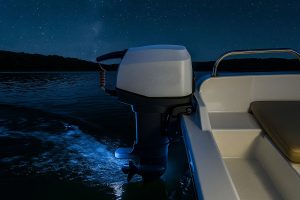
ACEL Power — Compact Intelligence and Full-System Integration
ACEL Power’s IE-series targets high-voltage, highly integrated electric outboards—useful for UK operators who need documented specs for risk assessments and UKCA files. The brand publishes model, voltage, battery architecture and charging details across product pages and its 2025 brochure.
The IE Series Overview
As of 2025, the line-up spans IE 50, IE 75, IE 150 and IE 250. IE 150 is rated 150 hp (peak ~200 hp) on an 800 V DC platform; IE 250 is rated 250 hp (peak ~350 hp).
Range & Efficiency
Published battery specs list IE 150 with ~86 kWh using 4 modules (semi-solid shown in the brochure); IE 250 is listed with either six semi-solid modules (~164 kWh) on the product page or ~172 kWh in the brochure (six modules, semi-solid). ACEL literature also notes LFP packs and semi-solid alternatives across the range, with IE 50/IE 75 examples showing 43 kWh (3 LFP modules) and 32–43 kWh configurations.
| Model | Pack (gross) | Headline | |
|---|---|---|---|
| IE 150 | ~86 kWh (4 modules; semi-solid shown) | 800 V DC system | |
| IE 250 | ~164–172 kWh (6 modules; semi-solid) | 800 V DC; peak ~350 hp | |
| IE 50 / IE 75 | ~43 kWh (3 LFP modules) / 32–43 kWh | LFP chemistry highlighted | |
| Charging | AC smart charger up to 6.6 kW | DC fast charge “~1 hour” (stated) |
For context when sanity-checking consumption per nautical mile: Vision Marine’s E-Motion 180E pairs a ~60 kWh pack with an estimated ~70 nm at ~20 mph (dependent on hull/conditions), and Evoy’s Storm 300+ pairs outboards with 63/126/189 kWh battery options. These bookends help you frame real-world range expectations for your hull form and speed profile.
Charging and Control
ACEL integrates the onboard computer, helm display, BMS, digital throttle and charger into a single ecosystem. In the UK, the practical routine is typically overnight AC on 16 A/32 A shore power, planning marina stops for DC where available. Ensure installations follow BS EN ISO 13297 principles with appropriate RCD protection and lockable inlets for the marine environment.
ExploMar vs ACEL Power — Side-by-Side Long-Range Comparison
| Factor | ExploMar (WAVE) | ACEL Power (IE) | |
|---|---|---|---|
| Energy Scaling | Modular SI-90 packs (~90 kWh each): e.g., 180, 270, 360, 540, 720 kWh configurations across WAVE systems | IE 150 ~86 kWh; IE 250 ~164–172 kWh (6 modules; semi-solid). IE 50/75 ~32–43 kWh | |
| Voltage | High-voltage platform across WAVE systems | 800 V DC architecture (IE 150/IE 250) | |
| Helm Integration | “SmartCaptain” with range/energy insights on product pages | Onboard computer + BMS + digital throttle + smart charger | |
| Charging | AC and DC options shown across system pages (portable ~7 kW; depot chargers up to ~120 kW) | AC smart charger up to 6.6 kW; DC fast charge stated “~1 hour” | |
| Range Posture | NMC SI-90 modules offer high energy per pack; scalable to 200 km-class platforms per recent launch | LFP or semi-solid options emphasise cycle life/thermal stability at higher kWh |
Which Brand Suits Your Long-Range Needs?
For Commercial and High-Speed Operators
If you’re running a commercial RIB or high-speed workboat where time is money, choose the platform that reaches your “day envelope” on one charge with reserves. The IE 250’s ~172 kWh pack gives ample headroom for electric boat range at moderate planing speeds—especially when your operation is “out and back” to a 32 A pedestal. If you prefer the weight distribution and energy density of NMC, ExploMar’s SI-90 × 2 approach provides a comparable total energy with modular redundancy; should a module fault out, you can limp home on one pack at reduced speed. (Always get the installer to document your emergency power plan and reserve policy.)
For Private Owners and Light Workboats
For day-boating and harbour services, the electric outboard with good range is the one that matches your typical mileage without topping up mid-day. If your usual run is 18–25 nm at 15–20 kn, a single-pack ExploMar SI-90 or ACEL IE 150 can be “right-sized” to keep costs and weight sensible. In both cases, overnight AC charging on UK marinas is the decisive convenience factor; DC is a bonus when available, not a dependency.
Conclusion
In 2025, both ExploMar and ACEL Power can credibly deliver long-range electric outboards for UK day-boating—your decision hinges on energy architecture and charging reality in your home marina. If you want the highest published kWh with robust LFP behaviour and an integrated helm suite, ACEL IE 250 stands out. If you favour lighter-per-kWh NMC packs with modular scaling and redundancy, ExploMar’s SI-90-based system is strategically compelling. Either way, build your plan around usable kWh at cruise, a conservative reserve, and Britain’s 16 A/32 A shore-power ecosystem. That’s how you turn spec sheets into all-weather confidence and find your personal winner for the longest range electric outboard in your use case.
Frequently Asked Questions
Can I fast-charge an electric outboard at UK marinas?
Most UK marinas provide 230 V AC at 16 A or 32 A via IEC 60309 connectors; true DC fast-charge pedestals are still rare.
What’s a realistic electric boat range for a Solent day trip?
For a 6–7.5 m planing hull cruising 15–22 kn, assume 2.0–3.0 kWh/nm in fair conditions and keep a 15–30% energy reserve. That puts a 76–86 kWh usable pack in the 25–38 nm bracket, depending on hull and tide.
Do UK compliance rules affect my retrofit choice?
Yes. Installations should conform to BS EN ISO 13297 for AC/DC systems and the craft should meet RCR 2017 with UKCA marking where applicable. Work with an installer familiar with these standards and keep your technical file updated.
Which brand is better for the longest range: ExploMar or ACEL?
On published numbers, ACEL’s IE 250 offers ~172 kWh from the factory, which is excellent for range at moderate planing speeds. ExploMar’s advantage is modular scaling via SI-90 blocks (≈90 kWh each) and NMC energy density; two modules rival IE 250 energy with redundancy. Your hull, speed and charging access decide the winner.
What shore power lead do I need on a UK berth?
Typically a 230 V single-phase IEC 60309 (“blue Commando”) 16 A or 32 A shoreline with appropriate RCD protection and marine-grade inlet. Confirm the pedestal rating with your marina before buying cables and adapters.
References
- ACEL Power — IE250 Product Page: Manufacturer details on 172 kWh LFP pack, 800 V platform, and integrated fast-charging system.
- Boats.com — “ACEL IE250 Electric Outboard: First Look Review”: Editorial coverage of ACEL’s high-voltage design and efficiency metrics (2025).
- UK Government — Recreational Craft Regulations 2017 (RCR 2017): Official UK compliance guidance for small-craft design and electrical systems.
- ExploMar — Official Website: Information on WAVE-series electric outboards, SI-90 battery modules, and SmartCaptain integration (2025 specification sheets).
- GOV.UK — Recreational Craft Regulations 2017 (GB guidance)
- BSI — BS EN ISO 13297:2021 (Small craft — Electrical systems)
- ISO — ISO 13297:2020 (Small craft — Electrical systems)
- IEC — IEC 60309 (industrial plugs/sockets; “blue Commando”)
- Tough Leads — UK guide to marine shoreline leads & connectors
